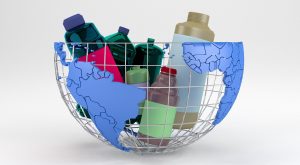Increasing the collection of plastic containers or improving their useful life are some of the challenges facing the recycling industry.
Polyethylene terephthalate or polyethylene terephthalate is the main material that makes up PET containers. PET is currently the most widely used type of plastic thanks to its significant advantages, such as its flexibility and lightness, its easy cleanability, its resistance to abrasion and its chemical and thermal resistance. However, it faces a number of challenges to further increase its circularity. To achieve this, investment in innovation and government support are essential elements.
Technology and design
Recycled PET is key in industries such as the food industry, since it allows, in addition to the advantages already mentioned, to add others such as preserving food without losing properties in an airtight manner, preventing external agents from damaging its flavor or spoiling it, or, thanks to its transparency, allowing the consumer to see what the containers contain inside. It is also a very important material in other sectors, such as the automotive, pharmaceutical and textile industries.
Other interesting articles: What the European Circular Economy strategy will mean for rPET packaging
The current importance of PET comes mainly as a result of innovation by companies such as REPETCO, which has been able to develop its own patented, nature-friendly system for multilayer PET/PE food packaging. Through a unique process, rPET pellets and rPET are generated that can be used again in the food industry with multilayer PET/PE trays and sheet packaging; in bottles for soft drinks or detergents; and in fibers for the textile and automotive industry.
Today, however, it is estimated that there is still ample room for improvement worldwide to increase the percentage of recycled PET included in the products that are marketed. In the case of trays used in food, the average is that around 55% of their components are recycled plastic, which means that increasing this percentage will also increase their circularity.
PET is a key material for many industries, such as food, automotive and pharmaceuticals.
To achieve this, it is necessary to work in a double way: on the one hand, improving the collection of this type of products that end up in containers and landfills for their classification and subsequent reuse in recycling plants; on the other hand, achieving, through innovation, that the useful life of these products is longer thanks to an increase in the number of reuses they can have, so that the negative impact of plastic on the environment is minimized as much as possible.
The PET Tray Circularity Assessment Platform
In order to accelerate the achievement of these objectives, the European association of companies involved in the PET packaging value chain, Petcore Europe, has launched the PET Tray Circularity Evaluation Platform (TCEP). Its main mission is to promote tray-to-tray circularity and recyclability, focusing on three main initiatives:
- Analyzing the recyclability of PET thermoformed container technologies and products.
- Promoting the recyclability of PET thermoformed containers.
- Facilitating new innovations in PET thermoformed packaging to reach the market, actively working to minimize potential economic and environmental risks.
Improved collection, design and commitment to innovation will be key to improving PET circularity
This platform, which is made up of technical specialists in the design, production and recycling of PET thermoformed products, will carry out, as a first activity, an evaluation of all existing technologies and innovations on these materials. Its results will be included in an impact document on PET recycling processes in the European Union (EU), which will be shared with the main EU institutions.
This report will serve as a spearhead to further promote harmonized European guidelines for the recyclability of PET trays throughout the industry value chain. The platform is also intended to carry out advisory work for all companies involved in the design, research and manufacture of PET packaging, promoting the use of new materials and concepts.
Other articles of interest: The challenges of PET containers in 2022







